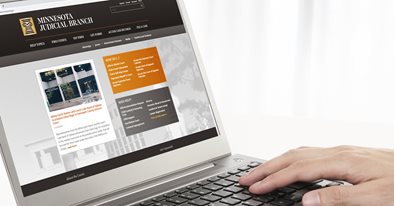News Item
First-ever Access and Fairness Survey of full Judicial Branch website
Posted: Friday, March 15, 2019

Visitors to the Minnesota Judicial Branch website will be asked during their visit to the website next week to take an optional
survey about their experience with the site. Beginning Monday March 18 website visitors will have one week to complete the web-specific survey that is a part of the Judicial Branch’s
statewide Access and Fairness Survey effort. The website survey will ask participants to review the ease and utility of the information on the website.
The Access and Fairness Survey is a four-month effort to gain input from court users during an in-courthouse visit, following a Court Payment Center call, or during a visit to the Minnesota Judicial Branch website. This is the first time the Access and Fairness Survey has included a survey component regarding the full Minnesota Judicial Branch website. The website survey will be available in English, Spanish, Hmong, and Somali.
“We strive to deliver convenient and easy-to-understand information on the Minnesota Judicial Branch website. The survey is an opportunity for Minnesotans to tell us how we are doing,” said Chief Justice Lorie S. Gildea. “We need to hear if website visitors are getting the information they need and expect from the site. Access and Fairness Survey responses will provide important and actionable feedback.”
The goal of the Access and Fairness Survey is to ensure accountability of the Judicial Branch, improve overall operations of the court, and enhance the public’s trust and confidence in the judiciary. Results from the Access and Fairness Survey are used to measure the Branch’s success in meeting its
strategic goals and improving the court visitor experience. The survey will be available online in four languages: English, Spanish, Somali, and Hmong.
The Minnesota Judicial Branch most recently conducted the in-person Access and Fairness Survey in 2008 and 2013. Survey-takers include participants in legal matters and their friends and family, victims, witnesses, attorneys, service counter users, jurors or potential jurors, journalists, and all other users of the court system.